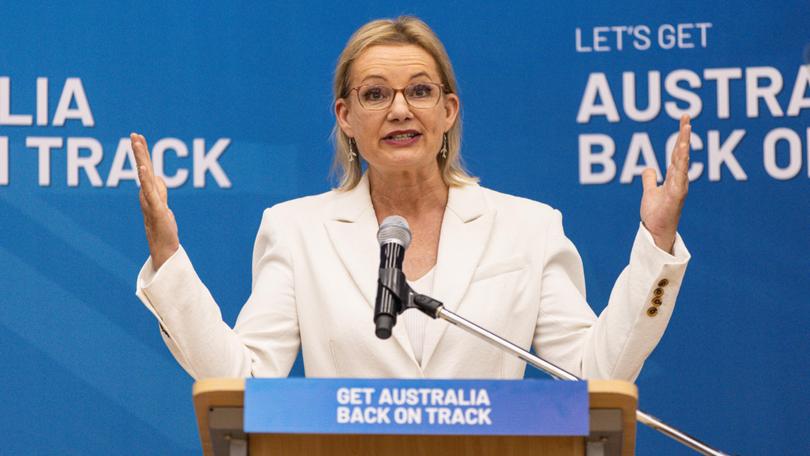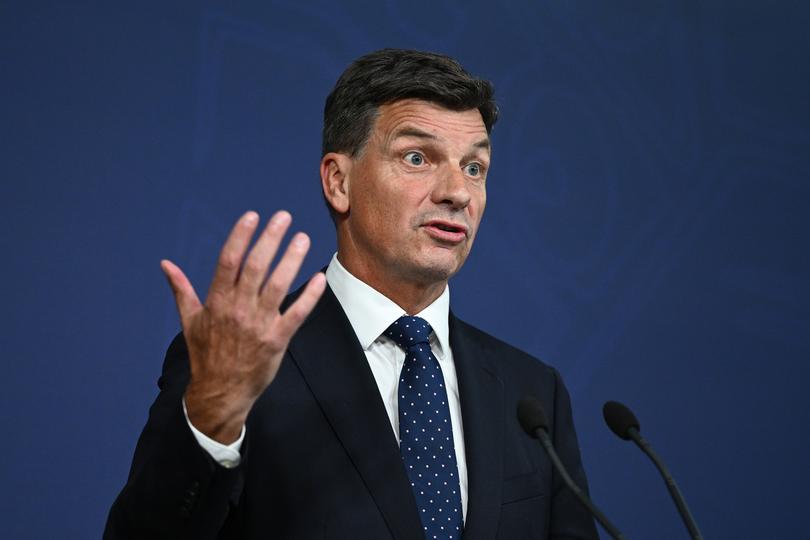PAUL MURRAY: Liberal Party must address its ‘anti-woman’ perception

If the surviving Liberal MPs in the Canberra party room are smart they will elect Sussan Ley as their leader next week.
At some stage, the Liberals need to cauterise the gender wounds which are now routinely inflicted on the party by its political opponents as being anti-women.
Whether or not they think that perception is fair, it needs to be confronted. There’s nothing that can be done in the short term about the composition of the newly-elected Federal team, but they do have the ability to show a willingness to address a damaging issue.
Sign up to The Nightly's newsletters.
Get the first look at the digital newspaper, curated daily stories and breaking headlines delivered to your inbox.
By continuing you agree to our Terms and Privacy Policy.The elevation of Ley would send a message that the Liberals are listening and prepared to change.
The former deputy leader is best placed to bring about a rebuild of the party’s fortunes for the simple fact that she will get more clean air than any male contender.
Ley will not have to fight gender stereotypes in the media daily and she will be a much more difficult target for Labor’s personal attacks than Tony Abbott, Scott Morrison or Peter Dutton were`.
Politics is the art of compromise. Sticking to principles is vital, but so is pragmatism.
And so is winning. The Liberals should realise that Labor outplays them on politics. They need to lower their sails on some issues to make progress.
Apart from that, the other main leadership contender, shadow Treasurer Angus Taylor, showed throughout the campaign that he is a poor communicator who was unable to put together convincing economic policy arguments to nail the Albanese Government’s ineptitude.
While the Liberals have barnacles to scrape off before they can expect to rebuild support, the loss is nowhere near as devastating as being painted in the media.
To secure what is being hailed as an historic Labor victory, Anthony Albanese won the same proportion of primary votes as his predecessor Bill Shorten attracted in losing to Malcolm Turnbull in 2016.
So while Albanese has had an emphatic win, the triumphalism is misplaced.
Labor is the beneficiary of a skewed preferential voting system. It is inescapable that people who want to see a government returned will vote for it directly — and 65.3 per cent of voters declined to do so.
In terms of seats, Albanese will win about as many as Coalition leaders John Howard in 1996 and Tony Abbott in 2013 — that’s 91 and 90 respectively — when both delivered landslides sparking commentary that Labor was washed-up and would take a generation to recover.
The respective primary votes yesterday stood at Labor on 34.7 per cent and the coalition on 32.27. That’s a margin of just 2.43 percentage points.
By comparison, in 2013, Labor got 33.38 and just 55 seats. The party has obviously recovered, but the two-party system has collapsed.
The voter turnout at this poll stands at a dismal 81.54 per cent with few seats left counting. In the previous five elections it fell constantly from 93.22 to 91.89. Voters are disengaging.
As much as parts of the news media might try, it’s not possible to ghost the 4,518,784 people who voted for the coalition parties. The figure for Labor is 4,859,867 — a difference of just 341,083 voters.
There have been media claims this week of a “shift at all levels” to Labor in WA. The truth is that Labor’s primary vote here went backwards by 0.75 per cent at this election.
It’s the same reason why Taylor shouldn’t be considered for the leadership now.
None of this is to make a case that the Liberals are not in crisis and don’t need to make major reforms to remain relevant. But every argument needs a sound factual base and what has been generally presented in the media about Labor’s election victory has lacked that.
One big question from this result is about a voting system that rewards a party with less than 35 per cent of the primary vote with 60 per cent of the seats in the House of Representatives.
This election shows that the full preferential system operated reasonably when the two-party system was strong, but now delivers perverse outcomes.
The problem is too many parties. The pie is divided into so many disparate portions that it is making our preferential voting system look unfit for purpose.
So while many on the left outside the Labor Party are delirious that they didn’t get Peter Dutton as their Prime Minister, the truth remains that if they really wanted a Labor government they would have voted for one.
The truth in that statement can be seen in the result in the Senate, where proportional representation dictates the results with Labor currently winning 28 seats and the coalition on 26.
In raw numbers nationally, the difference between the Labor and Coalition primary vote was less than the combined number of people who went for Legalise Cannabis (159,820) and Clive Palmer’s Trumpet of Patriots (261,378).
Both rump parties exist to manipulate the preferential voting system — and serve to show its weaknesses.
Legalise Cannabis might actively pursue a political objective, but in effect it’s a preference harvester favouring the teal independents and Labor. It was well-funded by wealthy Climate 200 donors, some with interests in marijuana farms.
Palmer’s extravagant spending on ridiculous advertising backed his decision to preference sitting members last in every electorate his new party contested, which hardly benefits democracy in a sensible way.
In both cases, compulsory voting compelled people to give them a preference rating in the Lower House — along with a host of other minor parties they would never want to see in the parliament — without understanding who those preferences might end up electing.
In the Senate, this compulsion extends only to marking six mandatory boxes above the line in what is a form of optional preferential voting. Even then, many people have to hold their noses to select the last few.

Why shouldn’t voters have the same option of avoiding parties they loathe in the Lower House ballots?
And while this issue needs airing, no one should think that Labor will ever consider reform when full preferential delivers them landslide victories from limited support.
But back to the Liberals.
Anyone in the organisation wanting to understand how different the result could have been should examine in detail Liberal MP Andrew Hastie’s win in Canning.
Against a fall in the Liberal primary vote in WA of 5.22 per cent, Hastie improved his by 1.64 per cent to 43.21.
That’s despite an unfavourable redistribution in 2024 and One Nation getting 11.05 per cent, up 6.4. One Nation preferences appear to have flowed strongly to Hastie.
Hastie is the argument against the Liberals going Labor-lite which was pretty much the Federal campaign strategy, if in fact there was one.
The former SAS captain has been the member since 2015 and his political posture is well known. He’s no moderate. Voters knew his values.
Hastie insulated himself from the Liberal campaign by going local, concentrating on concerns about the Peel Health Campus and Labor’s new vehicle emissions standards which will make the electorate’s ubiquitous 4WDs and Hilux utes more expensive.
This played out in traditional and social media as “Don’t die waiting for Labor to fix the hospital” and “Don’t let Labor tax your car”.
His ground game centred on the concept of articulating values concerning families, housing, education and small business, spread by a volunteer workforce sourced from the Voice “No” campaign.
All of that should be grist for the mill in a Liberal rebuild which will inevitably take it back in search of founder Robert Menzies’ “forgotten people” who have wandered away from both major parties.
One final point about the case in favour of Sussan Ley.
There has been some commentary about why Julie Bishop never rose to lead the Liberal Party as being indicative of its purported “woman problem”. The reality is very different and relates solely to performance.
When Bishop became deputy leader to Malcolm Turnbull in 2008, she got the right to choose her portfolio. She picked Treasury, having had workplace relations previously.
But Bishop lasted only four months before resigning from the post after being “subjected to strong criticism for failing to make a dent in the economic performance of the Rudd government and treasurer Wayne Swan,” according to the Sydney Morning Herald.
It’s the same reason why Taylor shouldn’t be considered for the leadership now.
“It is a judgment that I made, and I believe that the focus on my performance and my role was a distraction from the scrutiny that ought to be applied to the performance of the Rudd government in economic management,” Bishop said of quitting Treasury.
She then chose foreign affairs which is a basically bipartisan portfolio with very little political downside and lots of travel.
And that’s the background to why Bishop got only 11 votes out of 85 when she stood for the leadership in 2018 against Dutton and Morrison after Turnbull imploded.
